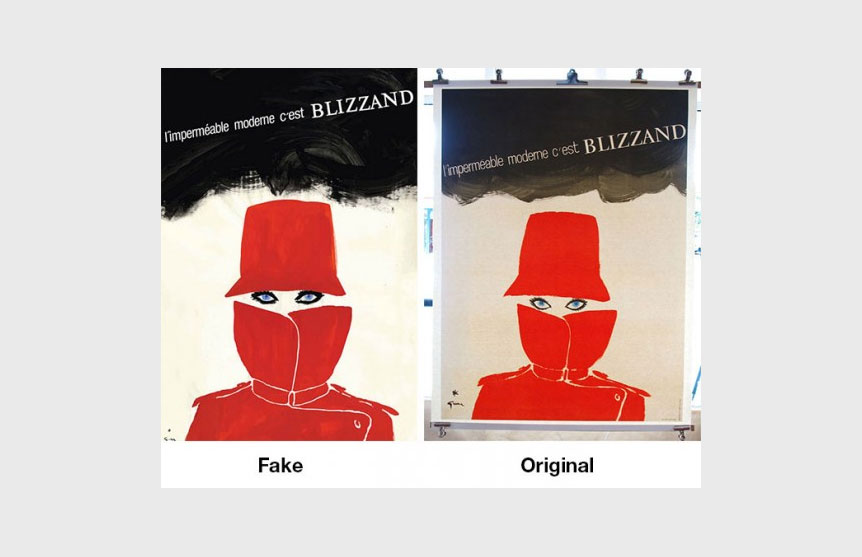We live in a world saturated by copies masquerading as originals, but luckily, there’s always a way to tell the difference.
Take the late René Gruau’s 1964 work ‘Impermeable Blizzand’. On the left, you’ll see a common fake, whilst on the right, our original. Notice the change in black paint strokes, the difference in the red colour and the thick eyelashes of the fake.
3 Important steps to ensure originality.
‘Certificates of Authenticity’ are a red flag
A real certificate of authenticity is a definition of the artwork including 4 things – the dimensions, the medium, the name of the artist and date it was printed. Most certificates of authenticity are a decorative piece of paper that use misleading language to trick the buyer.
Crosscheck details using the Internet
Jump online or contact the original printer or business to check the dimensions, the size of the print run, the materials used relevant to the time period and other details to ensure its original.
Observe the poster closely
Pay particular attention to the printer’s marks and logo to see if they are perfectly clear – which they would be if it’s an original. If they’re fuzzy, it’s most likely a fake.
We care strongly for originality in vintage posters. All our stock is hand selected in France before being shipped to Australia. We always give a definition of the artwork or poster, and never an unnecessary certificate of authenticity.
